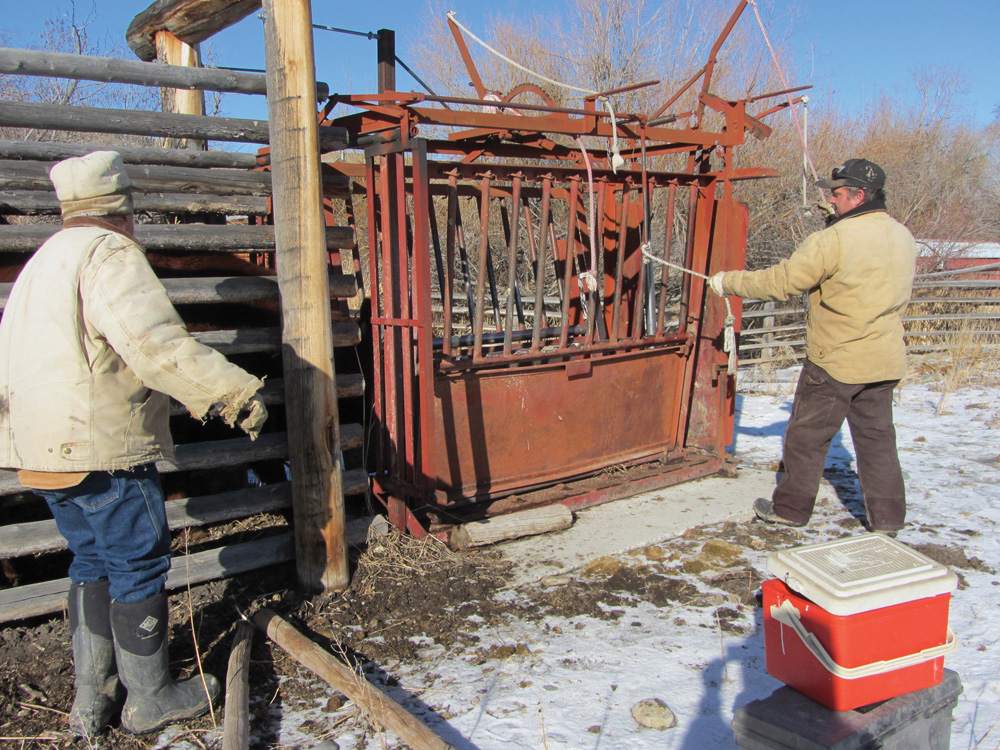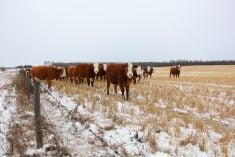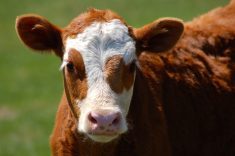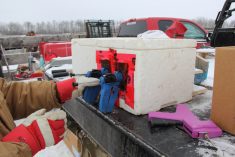We can’t always control how an animal responds to the vaccines we give (in terms of immune response, which can be affected by many factors including health issues and stress levels) but we do have complete control over how we handle and store the vaccines, to make sure they will be optimally potent.
Russ Daly, an extension veterinarian/associate professor, South Dakota State University, says vaccines are a good investment but they are expensive. “The last thing we want to do is go to the expense, time and effort of vaccinating cattle and then compromise our success with improper vaccine storage and handling. We don’t want to give our cattle something that is less than optimal,” he says.
Read Also

What to know before you go to Agribition 2025
If you’re attending Agribition 2025, this is the place to find out about tickets, dates and what’s happening this year.
The starting point is to purchase vaccine from a reputable supplier so you know it has been stored and handled correctly before it comes into your hands. “Buy vaccine from someone who is ordering vaccine on a regular basis — and has a reliable method for storage and refrigeration,” says Daly.
“Today these products are often shipped with temperature indicators in the shipping boxes, so the receiver will know immediately if there has been a problem during shipping (temperature too warm or too cold) before the package gets to the veterinary clinic or farm supply store,” he says.
When purchasing vaccine, always take notice of the expiration date and make sure you will be using it before that date. Sometimes the vaccine might have been in that store or clinic awhile. Most reputable places keep a good handle on their inventory and rotate the stock, but you’d hate to get home and find you bought something that will expire in the next few days, if you were planning on using it in a few weeks or next month. Sometimes you might get a good buy on something ahead of time and figure on keeping it until the next spring, but make sure it won’t be expired by then.
Vaccines should always be kept refrigerated, at the proper temperature. Most vaccines, whether they are killed or modified live, require refrigeration. The safe temperature range will be on the label.
“When you pick them up at the vet clinic, they should be put in a cooler to bring home,” says Dr. Steve Hendrick, Coaldale Veterinary Clinic, Coaldale, Alta. “You may not spend a lot of time in town, but you don’t want vaccine to get warm or freeze. Freezing is not a good thing for vaccines; it can change some vaccines and make them unsafe to use. Depending on the outdoor temperature you may need to either keep the heat out, or protect the vaccine from freezing,” he says.
“Killed vaccines that have been frozen may be dangerous to use, because freezing can alter the adjuvants in those vaccines. This can sometimes cause the formation of chemicals that can make animals sick. Vaccines that have been frozen should not be used,” explains Daly.
Occasionally, check the temperature in your refrigerator where you are storing the vaccine, especially if it’s an older fridge out in the barn. “You don’t want the vaccine freezing and thawing,” says Hendrick. “There can even be problems sometimes with the good fridge in the house. If you put your vegetables on the wrong shelf, they may freeze. You need to know the best place in that fridge for storing vaccine,” he explains. Put it in the most protected area that doesn’t have much temperature fluctuation.
“It’s also important to keep it at proper temperature out at the chute. Sometimes you may be working cattle at a remote location and can’t just keep it in the refrigerator and get it when you need it. You might be out there all day and need ice packs in a cooler, or in the winter you need a way to keep vaccine from freezing,” says Hendrick.
“Many people are vaccinating while they are preg checking, or giving a pre-calving vaccine in the winter when the weather may be very cold. Cattlemen often modify a cooler so they can put in a heat lamp or a small heater. I was at a place recently where they used five-gallon pails of hot water and had holes in the top of the pail they could stick the syringe guns into. The barrel and needle are inside the warm pail, so they won’t freeze,” he says. Even a jar of hot water in the cooler can keep the temperature inside from getting too cold. Ranchers are often quite inventive, coming up with ways to keep the vaccine from getting too warm or too cold.
In cold weather, you may need something warm in the insulated cooler, to keep the vaccines from freezing. “The goal is to maintain ideal temperature, or else the effectiveness of the vaccine will be less than when we bought it,” Daly says.
“If you can start out with everything warm and thawed out when you begin, the syringes, etc. won’t chill as quickly and freeze up. If weather is cold, move your cooler or container into a heated pickup cab or shed before you put the vaccine in it, or keep a space heater running near the chute. Having the area warm before you begin may delay freezing long enough to get through the job. Once things get frozen it’s a battle to keep them thawed out,” he says. It might be handy to have a thermometer in your cooler so you’d know when it starts to get too cold (or too warm, on a hot day). Hot packs or hot water bottles could be used to help keep things from freezing.
“In our region we have a lot of inventions and coolers that have been adapted for keeping syringes at proper temperature. Some have holes in the top to stick the pistol-grip syringes into; you can have plastic bottles filled with hot water in there to keep those needles from freezing up. It’s the needle and the tip of the barrel that tend to freeze first and then no vaccine can come through. Keeping that end of the syringe thawed out, and keeping the vaccine bottles that you haven’t mixed up yet from freezing will be very helpful,” says Daly.
“In summer, keep vaccine out of direct sunlight and keep it from getting warm,” says Hendrick. “Vaccine that’s been too warm won’t be any good. When in doubt, throw it out. Keep something over it to provide shade while you are working. With MLV vaccines, once it’s mixed up, try to use it all within an hour. Ideally, that’s the best. It might still be viable for two and maybe three hours, but this might depend on the temperature and whether it’s in sunlight.” It will gradually lose potency, so it’s best to use it soon.
“Don’t mix up more than you think you can use in an hour. Definitely do not mix it all up ahead of time; mix it as you go,” says Hendrick. There may be some delays along the way, such as an animal getting out of the chute or something breaks down and has to be fixed on the spot, or some other situation that slows the process while you are working that batch of cows.
“Always use a clean needle when drawing vaccine from the bottle. The killed vaccines don’t have to be used up immediately, like the MLV vaccines that you must rehydrate. If you use a clean needle to enter the bottle, and keep the vaccine at proper temperature, you could put the remainder of a killed vaccine back in the refrigerator and use it at a later date, but not if you’ve entered the bottle with a dirty needle.”
















